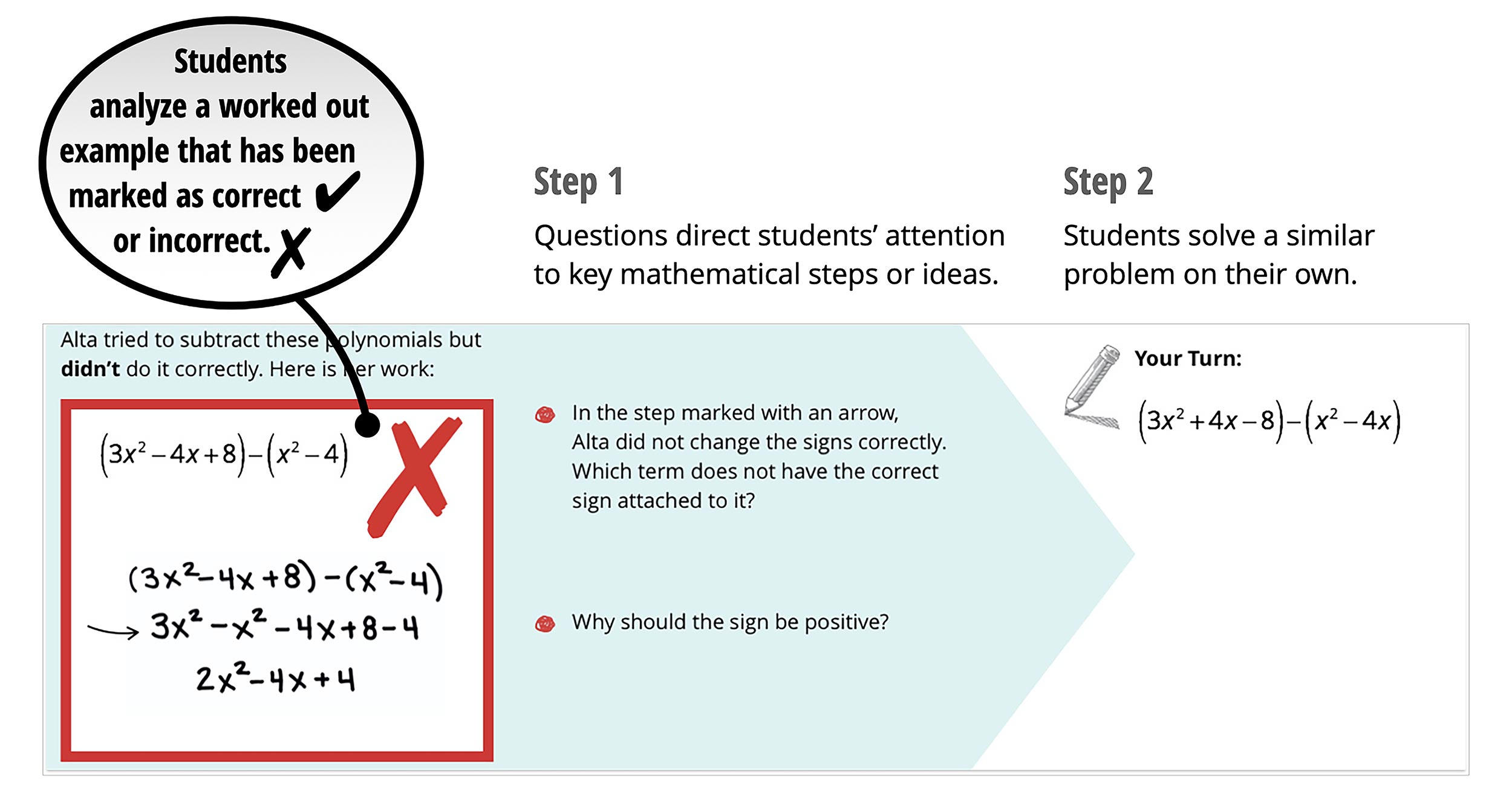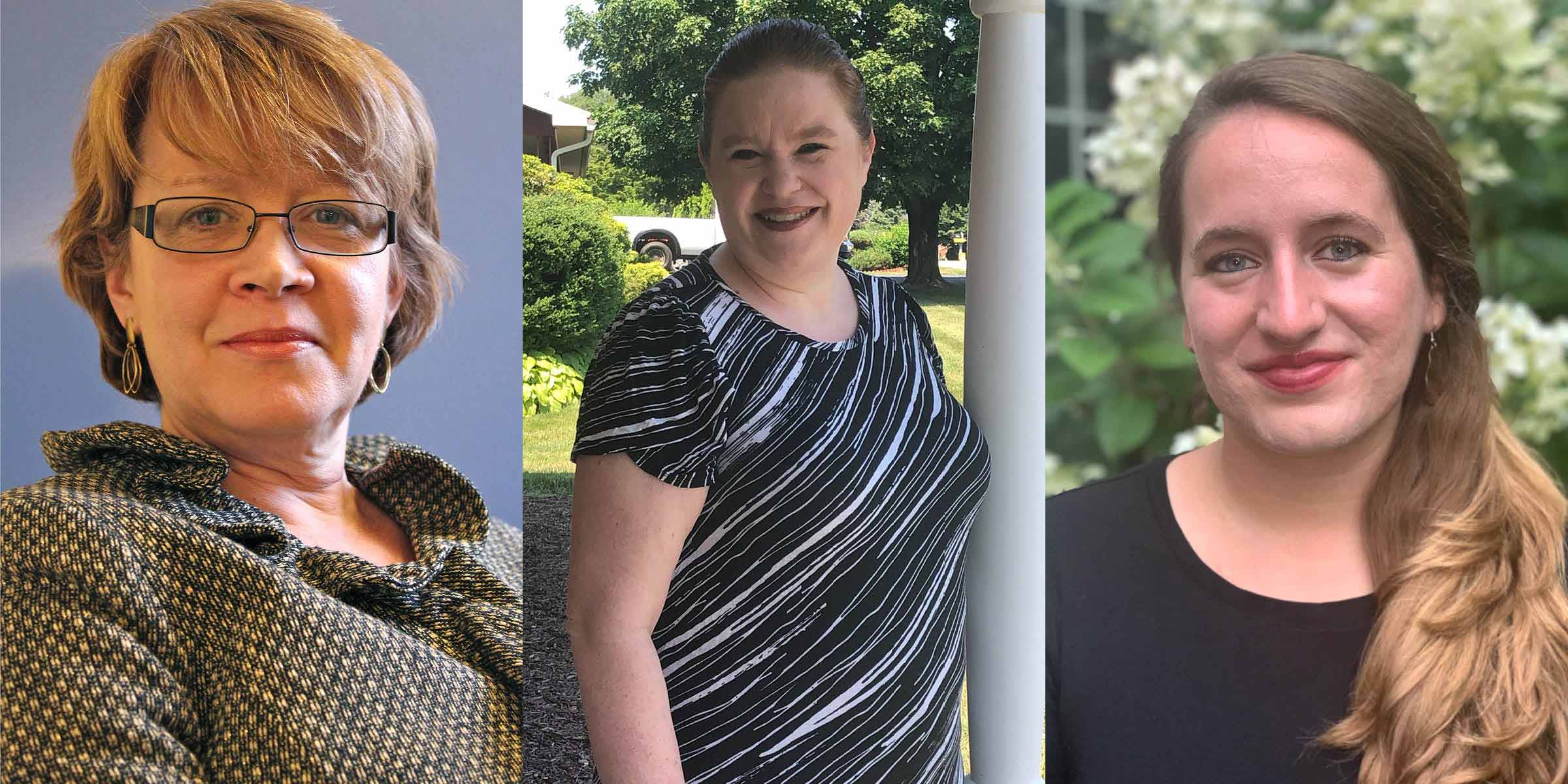Every student makes mistakes. But not every student is given the opportunity to learn from mistakes. Left unaddressed, the mathematical misconceptions that underlie many mistakes can keep students from progressing in mathematics.
At the request of districts in the Minority Student Achievement Network (MSAN), a Strategic Education Research Partnership (SERP) team was convened in 2007 to address a widening achievement gap in Algebra I. The team was charged with identifying an intervention strategy, subject to several district constraints:
- The solution would need to be applied to all students in the regular classroom to avoid the stereotype threat associated with separating students based on performance and to protect the intervention from budget cuts that target supplemental, after-school, and summer programs first.
- A new curriculum was off the table because it would create upheaval for a time and would be followed by a decline in student performance during the period of adjustment.
- Extensive teacher training was considered undesirable because it would be costly and because algebra teachers consider themselves more expert in mathematics teaching than central office staff who would be requiring the training.
Julie Booth joined the partnership, and with funding from IES, led the iterative development and testing of worked example assignments that, with the input of teachers and administrators, fit within the routines of the classroom. The result—AlgebraByExample—consists of 42 uniquely designed assignments that address misconceptions, harness the power of explanation, and use mistakes as a vehicle for learning.
Typical math assignments require students to solve problems on their own. If a student’s work is incorrect, the student may never focus on what went wrong. ByExample assignments also give students problems to solve, but they first provide a solution to a similar problem that is marked right or wrong. Students are prompted with questions that target common misconceptions and errors before solving a similar problem on their own. Each assignment contains several strategically designed item pairs:

Designed in collaboration with teachers from districts in several states, the assignments can be easily incorporated into any Algebra I curriculum and teachers can choose in what way and in what order to use them. The assignments were tested in randomized trials in classrooms in eight districts with more than 6,000 students. Not only did students using AlgebraByExample improve an average of 7 percentage points on an assessment of standardized test items, students at the lower end of the distribution improved the most. The PDF downloads of the assignments are freely available for anyone to use.
The success of AlgebraByExample led to further IES funding of MathByExample for Grades 4 and 5 and GeometryByExample for high school geometry .
Resources:
AlgebraByExample website
MathByExample website
Booth et al, 2015
NSF Stem for All Video Submission 2019
Interview with Dr. Suzanne Donovan (SERP), Dr. Julie Booth (Temple University), and Allie Huyghe (SERP), the developers of the ByExample interventions.

Was it part of the original plan to develop an intervention that could one day be used at scale in schools?
Yes. SERP partnerships begin with problems of practice nominated by district partners, but the partnership agreement distinguishes SERP from a consultant. The intention from the start is to frame the problem and design a solution that can be used at scale. SERP has developed in-house, user-centered design expertise so that resources (such as the ByExample products) developed through partnerships meet the needs of teachers and students. Products scale when they improve the experience of teachers and students. Both the model and the internal design capacity allow SERP to move from problem framing through research, development, and dissemination of a product with IES grant funding.
Describe the initial research and development that occurred.
Dr. Julie Booth drafted initial assignments drawing on the mathematics misconceptions literature. SERP held regular partnership meetings with teachers and administrators at which assignments were reviewed and additional misconceptions were nominated for attention in the assignments. Administrators agreed to randomization of the assignments across classrooms and within-teacher. Assignments were first tested in individual topic blocks and revised in accordance with student performance data, observations, and teacher feedback. A year-long pilot study was then conducted using the full set of assignments.
Beyond IES or ED grants, what additional funding was needed to develop the intervention?
For the ByExample work, additional funding was provided by the Goldman Sachs Foundation in the initial phase to support partnership formation, problem framing, and the solution generation. IES grants funded the research and development, along with initial dissemination activities to make the materials available to the public. We were also able to develop an online platform to allow for digital use with the IES grant funds.
What model was used for dissemination and sustainability?
The assignments are available as free downloads on SERP’s website, and as printed workbooks through SERP’s partner print-on-demand company. They have been publicized through online communications, journal articles, presentations at conferences of various types, social media, and word of mouth. There will be a small fee for use of the digital platform to support its maintenance, but the PDFs will remain as free downloads. We have been able to sustain the collaboration of the partnership team by responding to requests from educators to expand the approach to other grade levels and submitting additional proposals to IES that have been awarded.
What advice would you provide to researchers who are looking to move their research from the lab to market? What steps should they take? What resources should they look for?
First, I would note that it is difficult to persuade educators to use a product that solves a problem they don’t believe they have. Listen to educators and apply research expertise to address the challenges that they experience on a day-to-day basis. Design for ease of use by teachers. No matter how good your strategy or marketing is, if it’s too much work for an already busy teacher to use, you may get uptake by a few committed teachers, but not at scale. Finally, pay attention to where teachers get their information. For AlgebraByExample, we got a big boost from the Marshall Report, produced by a teacher for other teachers to call attention to usable research.
In one sentence, what would you say is most needed for gaining traction and wide scale use by educators?
Design for the routines of the classroom.
Suzanne Donovan, PhD, is the founding Executive Director of the SERP Institute, an education research, development, and implementation organization incubated at the National Academies. SERP leads collaborations of educators, researchers, and designers to generate research-based, scalable, and sustainable solutions to critical problems of practice.
Julie Booth, PhD, is a Professor of STEM Education and Psychology and the Deputy Dean of Academic and Faculty Affairs at Temple University’s College of Education and Human Development. Her work focuses on translating between cognitive science and education to better understand students’ learning and improve instruction, primarily in mathematics education. She is currently an Executive Editor for the Journal of Experimental Education.
Allie Huyghe is the Assistant Director of the SERP Institute, where she manages several projects, including the IES-funded MathbyExample and GeometryByExample projects. She is also intricately involved with other SERP areas of work, participating in the design of materials from early development through release to the public.
This interview was produced by Christina Chhin (Christina.Chhin@ed.gov) and Edward Metz (Edward.Metz@ed.gov) of the Institute of Education Sciences. This is the fifth in an ongoing series of blog posts examining moving from university research to practice at scale in education.